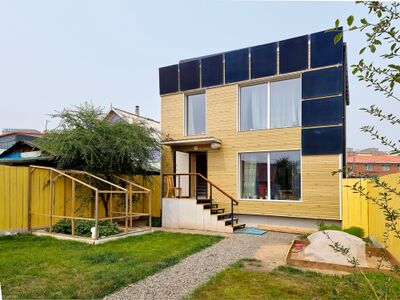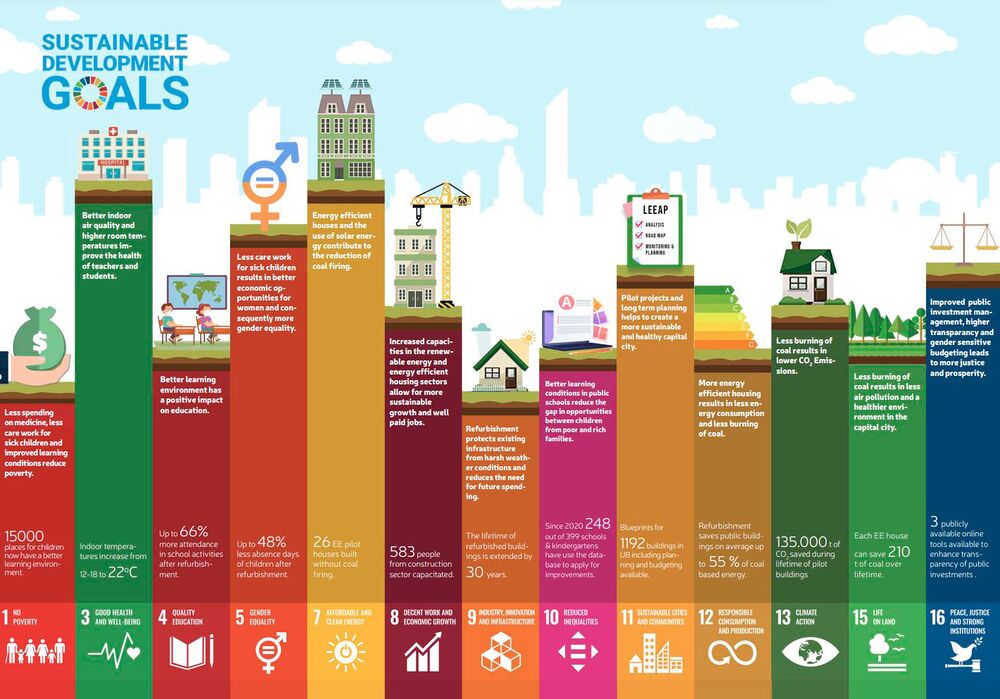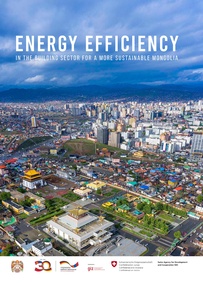Knowledge fuels change
For over a decade, Energypedia has shared free, reliable energy expertise with the world.
We’re now facing a serious funding gap.
Help keep this platform alive — your donation, big or small, truly matters!
Thank you for your support
Energy Efficient Building Refurbishment in Mongolia
About EEP
Mongolia is characterised by extreme climatic conditions with short summers and long, cold winters which makes Ulaanbaatar the coldest capital in the world. As of 2020, the city is home to 411,000 households, 221,000 of whom live in informal settlements called “ger districts”.
The ger districts are mostly off-grid areas with limited access to electricity, water, sanitation, heat supply, and public transport. In their brick-and-mortar houses and gers with high energy loss, households burn coal in stoves and use latrines in temperatures regularly dropping below minus 20°C. This makes the city a pollution hub, and exposes it to a public health crisis.
Hence, energy efficiency in the building sector is a crucial topic with extensive dimensions. Without good insulation, winter times mean cold buildings and devastating air pollution. A problem that is most hazardous for children and elderly people, but harms everyone. For example, miscarriages are 3.6 times more likely to happen during coal burning months, and one in 10 deaths is attributable to air pollution, 80% of which is caused in the ger districts. Low room temperatures in public and private buildings are an additional acute health hazard during the winter season. At the same time Mongolia has joined the Paris Climate Agreement and pledged to reduce its greenhouse gas emissions. If widely applied, the measures to improve energy efficiency in the building sector can also significantly reduce Mongolia's CO2 emissions - currently ranked 8th in the world on a per capita basis - and thus fulfil the Paris Climate Agreement.
- EEP - Children in Kindergarten.PNG
- EEP - Ulaanbaatar Governance.PNG
The Energy Efficiency Project
Against this backdrop, a project was developed in close cooperation with the Municipality of Ulaanbaatar (MUB), and the Ministry of Energy (MoE). The project was financed by the Swiss Agency for Development and Cooperation (SDC) & the German Federal Ministry for Economic Cooperation and Development (BMZ).
As this cooperation was established on existing activities, two projects were merged: The SDC-funded ”Public Investment in Energy Efficiency Phase 2“ (PIE-2), and the German Government funded “Energy Efficiency Building Refurbishment in Mongolia“ (EEP). The two projects joined forces, and worked together along with the MUB on four main topics on different implementation levels.
Sustainable Development Goals (SDGs)
The United Nations Sustainable Development Goals (SDGs) were adopted by all United Nations Member States in 2015 as a universal call to action to end poverty, protect the planet and ensure that all people enjoy peace and prosperity by 2030. There are a total of 17 interrelated SDGs: Action in one area will affect outcomes in others. All development must balance social, economic, and environmental sustainability.
The Project has contributed to thirteen SDGs in the following areas: Some numbers show direct examples of the project’s contribution. More can be seen in the relevant articles. Each chapter indicates the relevant SDG symbols that have been touched upon.
The magazine on EEP's work in Mongolia can be downloaded here:
For more information about the project please contact: Dr. Dunja Hoffmann und GIZ Mongolei.
























